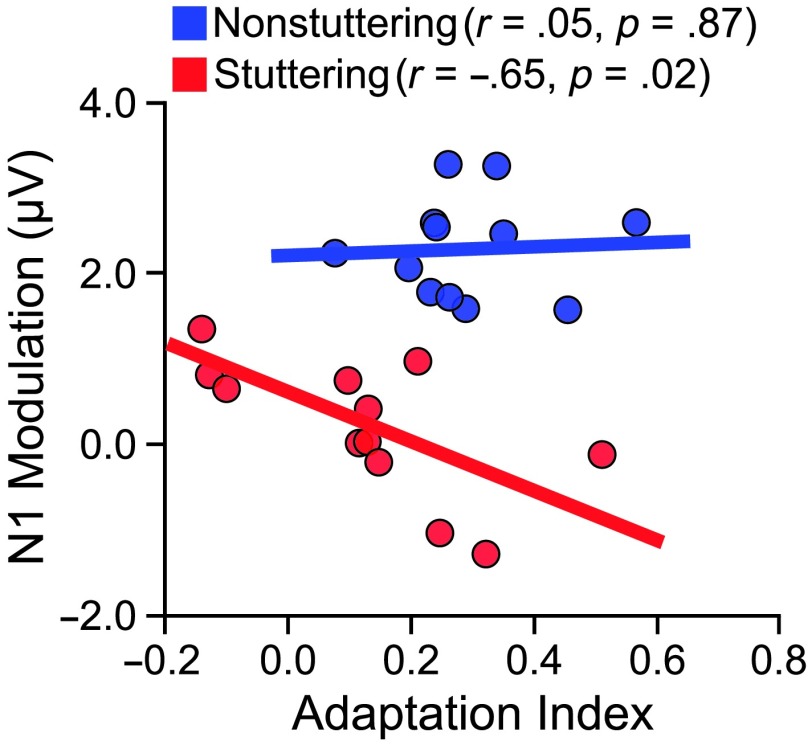Figure 5.
Relation between pre-speech modulation of the auditory evoked potential N1 component and speech adaptation to altered auditory feedback. Participants completed an auditory–motor adaptation paradigm that allowed us to quantify each participant's adaptation to formant-shifted auditory feedback. The same participants also completed our standard pre-speech auditory modulation (PSAM) paradigm that allowed us to quantify each participant's extent of N1 and P2 modulation prior to speech onset. N1 PSAM was not statistically significantly correlated with the amount of adaptation for speakers who do not stutter (r = .05, p = .87), and it was negatively correlated with the amount of adaptation for speakers who stutter (r = −.65, p = .02). Neither group showed a significant correlation between adaptation and P2 PSAM (p > .349). Adapted from Daliri and Max (2018): Cortex, Vol. 99, A. Daliri and L. Max, “Stuttering Adults’ Lack of Pre-Speech Auditory Modulation Normalizes When Speaking With Delayed Auditory Feedback,” pp. 55–68, Copyright © 2018, with permission from Elsevier.

 This work is licensed under a
This work is licensed under a 